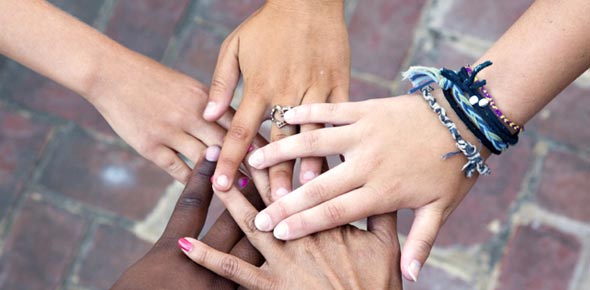Chapter 12: A Family Perspective In Community/Public Health Nursing
-
1. When a home health nurse visits a family for the first time, what is the nurses primary goal?
-
A. Complete physical examinations on as many family members as time allows.
-
B. Have the family complete as many assessment tools as time allows.
-
C. Make sure all records, including third-party payer information, are accurate.
-
D. Observe and interview the family to identify family strengths and needs.
-
Explore family dynamics in community health settings through this focused quiz. It assesses understanding of family roles, developmental stages, and interaction mechanisms in health scenarios, vital for nursing professionals.
(91).webp)
Quiz Preview
- 2.
7. The nurse is caring for a family who is very anxious and tense. Which of the following would be the most appropriate nursing intervention?
-
A. Being supportive as the family debates what should be done about the problems
-
B. Calmly discussing the familys perception of their problems and coping mechanisms
-
C. Sharing with the family the interventions to be made and the goal of the interventions
-
D. Telling the family what should be done to reduce their anxiety and fearfulness
Correct Answer
A. B. Calmly discussing the familys perception of their problems and coping mechanismsExplanation
The most appropriate nursing intervention in this situation would be to calmly discuss the family's perception of their problems and coping mechanisms. This approach allows the nurse to acknowledge and validate the family's feelings of anxiety and tension, while also providing an opportunity for open communication and understanding. By discussing their perception of the problems and coping mechanisms, the nurse can work collaboratively with the family to develop appropriate interventions and goals that address their specific needs and concerns. This approach promotes a therapeutic relationship and empowers the family to be actively involved in their own care.Rate this question:
-
- 3.
2. After completing an assessment, the nurse discusses with the family some actions that needed to be taken and refers to the wife in the family as an incredible organizer. Which of the following goals is the nurse trying to achieve by making this statement?
-
A. Making the husband proud that he had married his wife
-
B. Making the wife feel very complimented and positive
-
C. Encouraging the wife to volunteer to follow through on all the needed actions
-
D. Reinforcing for the family some of the strengths of one of their family members
Correct Answer
A. D. Reinforcing for the family some of the strengths of one of their family membersExplanation
The nurse is trying to reinforce for the family some of the strengths of the wife by referring to her as an incredible organizer. This statement aims to highlight the wife's positive qualities and strengths, potentially boosting her self-esteem and confidence. It also serves to acknowledge and appreciate her contributions to the family, fostering a sense of unity and support within the family unit.Rate this question:
-
- 4.
12. According to the ABCX model, with which of the following feelings or behaviors will a typical family react after a crisis occurs?
-
A. Disorganization, recovery, and then reorganization
-
B. Grief, anger, denial, and then frustration
-
C. Loss, confusion, and then seeking answers
-
D. Shock, denial, and then acceptance
Correct Answer
A. A. Disorganization, recovery, and then reorganizationExplanation
According to the ABCX model, a typical family will react to a crisis by first experiencing disorganization, as they try to cope with the sudden changes and challenges brought on by the crisis. After this initial phase, they will go through a period of recovery, where they start to regain their stability and find ways to adapt to the new circumstances. Finally, they will reach a stage of reorganization, where they are able to establish a new sense of normalcy and integrate the changes caused by the crisis into their lives.Rate this question:
-
- 5.
11. A nurse has completed an assessment and diagnosed a familys problems. Which of the following actions should the nurse take next?
-
A. Determining which problem should be addressed first
-
B. Emphasizing the familys adaptability, strengths, and resources
-
D. Writing the diagnoses in the order of their priority
-
D. Writing the diagnoses in the order of their priority
Correct Answer
A. B. Emphasizing the familys adaptability, strengths, and resourcesExplanation
The nurse should emphasize the family's adaptability, strengths, and resources because this will help to empower the family and build a positive therapeutic relationship. By focusing on the family's strengths and resources, the nurse can help them to identify and utilize their own abilities to address their problems. This approach promotes a sense of self-efficacy and encourages the family to take an active role in their own care. Additionally, by highlighting the family's strengths, the nurse can help to build a foundation for problem-solving and resilience.Rate this question:
-
- 6.
3. Upon what variable are Duvalls developmental stages based?
-
A. Age of the oldest child
-
B. Age of the parent or parents
-
C. Family function
-
D. Family structure
Correct Answer
A. A. Age of the oldest childExplanation
Duvall's developmental stages are based on the age of the oldest child in the family. This means that the stages are determined by the developmental milestones and challenges that the oldest child is going through at different ages. The age of the oldest child is considered significant because it often affects the dynamics and roles within the family, as well as the parents' level of experience and parenting style. Therefore, understanding the age of the oldest child helps to identify the specific stage of family development that the family is in.Rate this question:
-
- 7.
8. Which of the following would be better understood by the nurse after using a family map?
-
A. Recognition of the communicator and leader who speaks for the family
-
B. Description of the genogram or family tree of the family
-
C. Identification of the geographic location of neighborhood resources for the family
-
D. Roles and relationships within the family
Correct Answer
A. D. Roles and relationships within the familyExplanation
A family map is a tool used to visually represent the roles and relationships within a family. By using a family map, the nurse can gain a better understanding of the dynamics within the family, including the different roles each member plays and how they are connected to one another. This information can be valuable in assessing the family's strengths and weaknesses, as well as identifying potential sources of support or conflict within the family unit. Therefore, option d is the most appropriate answer as it aligns with the purpose and function of using a family map.Rate this question:
-
- 8.
9. Which of the following statements would be the most accurate description of symbolic interaction in a family?
-
A. Behaviors of one person are the cause of behaviors in another family member.
-
B. Behaviors of one person are the effect of behaviors in another family member.
-
C. Behaviors of one person are both the cause and the effect of behaviors in another family member.
-
D. Behavior within the family is consistent, patterned, and repetitious.
Correct Answer
A. C. Behaviors of one person are both the cause and the effect of behaviors in another family member.Explanation
Symbolic interaction in a family refers to the idea that the behaviors of one person in the family can both influence and be influenced by the behaviors of another family member. This means that actions and interactions within the family are reciprocal, with each person's behavior affecting and being affected by the behavior of others. It recognizes that family members are interconnected and that their actions and reactions to each other's behaviors create a dynamic and interactive family system.Rate this question:
-
- 9.
10. A community/public health nurse is working with a family who is having difficulty with communication. Which of the following behaviors would cause the nurse to be concerned?
-
A. Family members communicate through behaviors and verbal statements.
-
B. Family members use rules to regulate behaviors in the family.
-
C. Family members use double-bind messages.
-
D. Family members communicate through metacommunication.
Correct Answer
A. C. Family members use double-bind messages.Explanation
Double-bind messages refer to contradictory or mixed messages that create confusion and tension in communication. This can lead to misunderstandings, frustration, and difficulty in resolving conflicts within the family. The nurse would be concerned because double-bind messages can negatively impact the overall well-being and functioning of the family. It is important for effective communication to be clear, consistent, and free from contradictory messages.Rate this question:
-
- 10.
13. What are the two phases that families experience after a major life event?
-
A. Asking for help and accepting assistance
-
B. Seeking assistance and relying on the familys own resources
-
C. Temporary adjustment and long-term adaptation
-
D. Reduction of stressors and adapting to reduce tensions
Correct Answer
A. C. Temporary adjustment and long-term adaptationExplanation
After a major life event, families typically go through two phases. The first phase is temporary adjustment, where they make short-term changes and adaptations to cope with the immediate impact of the event. The second phase is long-term adaptation, where they make more permanent adjustments and changes to their lives in order to adapt and move forward after the event. These two phases reflect the process of how families respond and adjust to major life events over time.Rate this question:
-
- 11.
14. Which of the following variables makes some families more vulnerable to dysfunction than others in facing a particular crisis?
-
A. A family members moving away
-
B. Addition of a new family member
-
C. Additional stressful events
-
D. Previous experience with stressful events
Correct Answer
A. C. Additional stressful eventsExplanation
Additional stressful events can make some families more vulnerable to dysfunction than others in facing a particular crisis. This is because when a family is already experiencing multiple stressors, such as financial difficulties, health issues, or relationship problems, the addition of another stressful event can further strain their coping mechanisms and resources. It can overwhelm the family's ability to effectively deal with the crisis, leading to dysfunction and potential breakdown in communication, relationships, and overall functioning.Rate this question:
-
- 12.
5. After completing an assessment and discussing the plan of care with the family, upon which member would the nurse focus effort?
-
A. The adult patient with the acute flare-up of chronic illness
-
B. The child who, being young, was energetic and enthusiastic
-
C. The extended family, who had to learn to become a resource
-
D. The spouse, who was flexible and able to cope
Correct Answer
A. D. The spouse, who was flexible and able to copeExplanation
The nurse would focus effort on the spouse because they are described as being flexible and able to cope. This suggests that the spouse may be better equipped to handle the challenges and demands of caring for the patient with an acute flare-up of chronic illness. By focusing on the spouse, the nurse can provide support and resources to help them effectively care for the patient and manage any additional stress or responsibilities that may arise.Rate this question:
-
- 13.
4. Why would a family strenuously resist the nurses efforts to be helpful?
-
A. People have the tendency to want to stay the same.
-
B. The family as a system operates on the principle of equifinality.
-
C. The nurse crossed the familys coping boundary.
-
D. The family system is trying to achieve entropy.
Correct Answer
A. A. People have the tendency to want to stay the same.Explanation
The correct answer is a. People have the tendency to want to stay the same. This suggests that the family may resist the nurse's efforts to be helpful because they are resistant to change. People often prefer to maintain their current state and resist any attempts to disrupt their routines or habits. This resistance could stem from fear of the unknown or a desire for stability and familiarity. Thus, the family may resist the nurse's efforts because they are comfortable with their current situation and do not want things to change.Rate this question:
-
- 14.
6. In the midst of anxiety and concern over the new diagnosis, it seems that every family member was distancing himself or herself from the rest of the family. What mechanism would the nurse recognize that the family members are using?
-
A. Anger reduction strategies
-
B. Double-bind communication
-
C. Circumplex modeling
-
D. Triangling
Correct Answer
A. D. TrianglingExplanation
The nurse would recognize that the family members are using triangling as a mechanism. Triangling refers to a situation where one family member involves a third person to reduce tension or conflict between themselves and another family member. In this case, each family member is distancing themselves from the rest of the family, possibly to avoid direct confrontation or to seek support from someone outside the immediate family. This behavior indicates the use of triangling as a coping mechanism in response to anxiety and concern over the new diagnosis.Rate this question:
-
- 15.
15. Which of the following actions should a community/public health nurse perform when providing care with the use of a family perspective?
-
A. Assessing all individuals for necessary services and interventions
-
B. Engaging in therapy on the basis of theories of communication and symbolic interaction
-
C. Maximizing the health and well-being of all individuals within a family
-
D. Suggesting appropriate roles for various family members during a crisis
Correct Answer
A. C. Maximizing the health and well-being of all individuals within a familyExplanation
The correct answer is c. Maximizing the health and well-being of all individuals within a family. A community/public health nurse should focus on promoting the health and well-being of all individuals within a family, rather than just assessing individuals for necessary services or suggesting roles during a crisis. Engaging in therapy based on communication theories and symbolic interaction may be a part of the nurse's role, but it is not specific to providing care with a family perspective. Therefore, the best action for the nurse is to prioritize the health and well-being of all family members.Rate this question:
-
Quiz Review Timeline (Updated): Mar 3, 2025 +
Our quizzes are rigorously reviewed, monitored and continuously updated by our expert board to maintain accuracy, relevance, and timeliness.
-
Current Version
-
Mar 03, 2025Quiz Edited by
ProProfs Editorial Team -
May 14, 2020Quiz Created by
Son
Gateway B1 Unit 1 Test Standard Listening
This listening skills quiz from Gateway B1 Unit 1 assesses understanding of family dynamics and rules through statements and matching exercises. It evaluates teenagers'...
Questions:
11 |
Attempts:
1386 |
Last updated:
Mar 21, 2023
|
|
Family Quiz: Can You Pass The Family Test?
Get ready for this family quiz, or you can say family test quiz. Having a family gives a sense of togetherness, and kids who grew up in a family, when compared to those who...
Questions:
10 |
Attempts:
11379 |
Last updated:
Oct 23, 2024
|
Social Care With Children And Families - QP10
This quiz, titled 'Social Care with Children and Families - QP10', assesses understanding of family dynamics, transitions in children's lives, and social work sensitivity during...
Questions:
10 |
Attempts:
263 |
Last updated:
Mar 17, 2023
|
Social Care With Children And Families - QP6
This quiz, titled 'Social Care with Children and Families - QP6,' assesses understanding of family dynamics under external pressures like poverty and racism. It evaluates...
Questions:
10 |
Attempts:
256 |
Last updated:
Mar 17, 2023
|
Social Care With Children And Families - QP5
This quiz, titled 'Social Care with Children and Families - QP5', assesses knowledge on family dynamics, social support mechanisms, and challenges faced by young mothers. It is...
Questions:
10 |
Attempts:
224 |
Last updated:
Mar 17, 2023
|
Social Care With Children And Families - QP1
This quiz titled 'Social Care with Children and Families - QP1' explores the dynamics and challenges within family structures, focusing on roles, societal expectations, and the...
Questions:
8 |
Attempts:
732 |
Last updated:
Mar 19, 2023
|
 Back to top
Back to top








